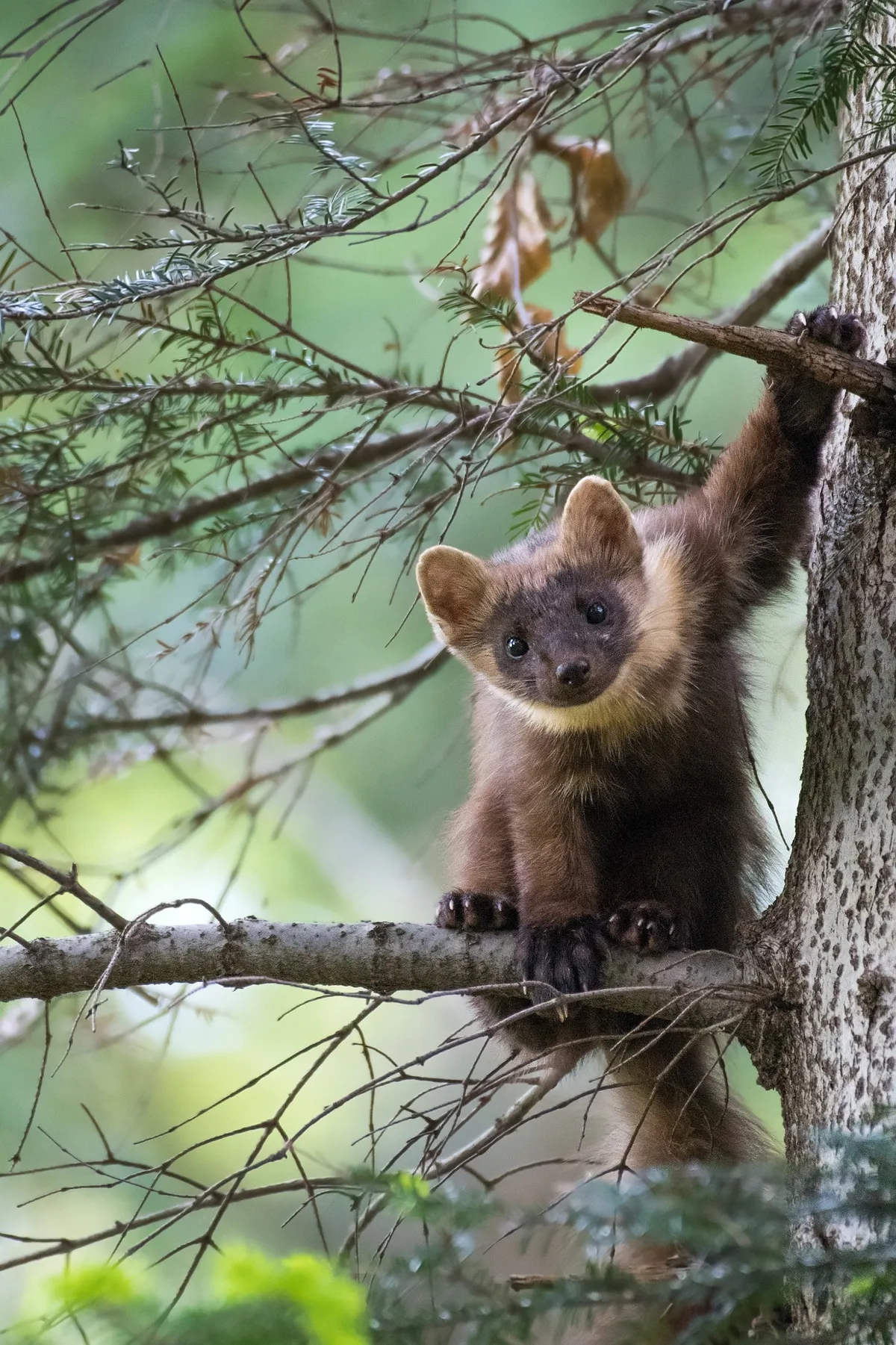European pine martens predate on non-native grey squirrels significantly more than native red squirrels, according to new research by Queen’s University Belfast.
Both squirrel species feature on the mustelid’s menu, but grey squirrels are preyed upon exclusively during the squirrel’s spring and summer breeding season. It is thought that pine martens raid grey squirrels’ nests, known as ‘dreys’, feeding on juveniles and mothers caring for their offspring.
“Our findings align with the evolutionary physiology and morphology of many small carnivores,” says research lead Joshua Twining from the School of Biological Sciences at Queen’s University Belfast. “Slim and slender, pine martens are adapted to pursue prey into small ‘hidey holes’, such as dreys, that other predators cannot access.”
Slim and slender, pine martens are adapted to pursue prey into small ‘hidey holes’
This hunting technique is thought to be behind the recent decline of grey squirrels across Ireland and the UK. Red squirrels, however, have evolved to live alongside pine martens in their shared European homeland and appear to have a greater awareness of the threat they pose.
It is also suspected that grey squirrels are preferred by pine martens as they are larger (and therefore a richer energy source) and found in higher numbers.

As part of the research, Joshua Twining surveyed 24 forestry sites across Northern Ireland known to have a relatively high abundance of pine martens and the presence of either red or grey squirrels. Each site was visited monthly over several seasons and any pine marten scat was analysed to understand the proportion of red and grey squirrel consumed.
“Our results are interesting as they help explain the mechanism underpinning how pine martens are able to regulate invasive grey squirrel populations, and give a much-needed boost for another one of its prey species, our native red squirrels,” adds Twining.

The research, published in the paper Mammalian Biology and funded by the People’s Trust for Endangered Species (PTES), offers an important insight into the lives of European pine martens, which have been listed as Critically Endangered. Recent estimates suggest there are about 3,000 in Ireland, 9,000 in the UK and only 100 thought to be in England.
It’s important that we understand exactly how pine martens are faring, which includes their predation habits.
Nida Al-Fulaij, grants manager at PTES, says: “It’s important that we understand exactly how pine martens are faring, which includes their predation habits. Pine martens are desperately in need of our help, but this is very positive step forward in our understanding of this species, which ultimately will help us to conserve them long term.”
Main image: Native European pine marten. © Joshua P Twining
